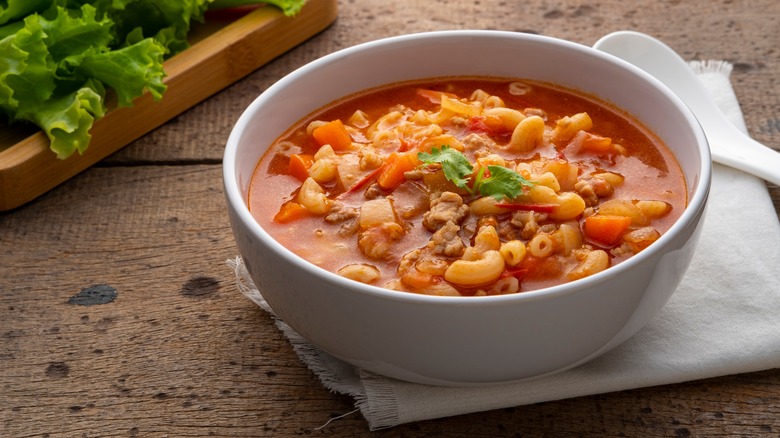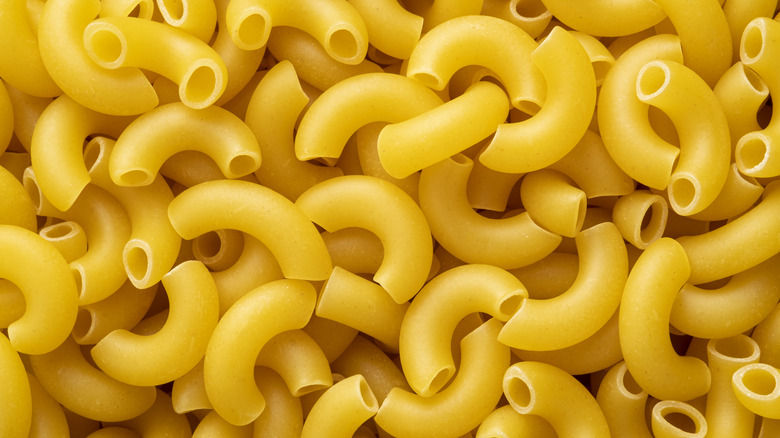The Addition That Sets Hoosier Chili Apart From The Rest
Chili has a storied history in the United States. Written accounts of chili con carne recipes date back to the 1800s, though variations of it surely existed long before that. Today, chili is a beloved comfort food throughout the entire year, but especially in chilly autumn and winter. It has evolved to include many regional types, and this can trigger arguments among folks who hold very strong opinions about what ingredients should and should not be included in chili. Even neighboring states have different chili recipes, like Ohio and Indiana, for example. Ohio — or more specifically, Cincinnati — might have the more well-known (and controversial) recipe that is served over spaghetti, but Indiana boasts a unique chili of its own, known as Hoosier Chili, that is made with macaroni noodles.
Other ingredients in Hoosier chili are pretty familiar and inoffensive to most chili purists. Besides macaroni, it includes ground beef, tomato sauce or juice, beans, bell peppers, onions, and various spices. It's often topped with shredded cheddar cheese and Fritos chips. Unlike the thick stews you may see in the Southwestern U.S., Hoosier chili is thinner and more like a soup.
The murky origins of Hoosier chili
According to an article published in The Indy Star, the first mention of Hoosier chili was when an Indiana woman named E.C. Comer submitted her chili recipe to a local newspaper in 1908, which is 14 years earlier than the invention of the more famous Cincinnati chili in 1922. E.C. Comer's recipe called for "a 10-cent piece of boiling beef" and the controversial ingredient at the center of heated chili debates: spaghetti. It's unclear when and why macaroni noodles were eventually the pasta that became synonymous with Hoosier chili, but it's speculated that it was a cheap way to make the meal more filling during the Great Depression, and made it easier on Midwestern folks who weren't accustomed to Southwestern spice levels.
Today, there are plenty of recipes for Hoosier chili on the internet, though some food bloggers call it by a different name, like "Hoosier chili soup" or "chili mac soup." There are also recipes that use different noodle shapes, like rotini, instead of elbow macaroni. While people who are passionate about a classic beef chili may be horrified at the addition of macaroni — or any noodle for that matter — it does bring a nice balance of carbohydrates to a dish otherwise packed with protein. And remember, don't knock it till you've tried it. You just might find Hoosier chili tasty enough to end up on a regular rotation of home-cooked dinners, though no one will blame you if you prefer to call it by a name other than "chili."

